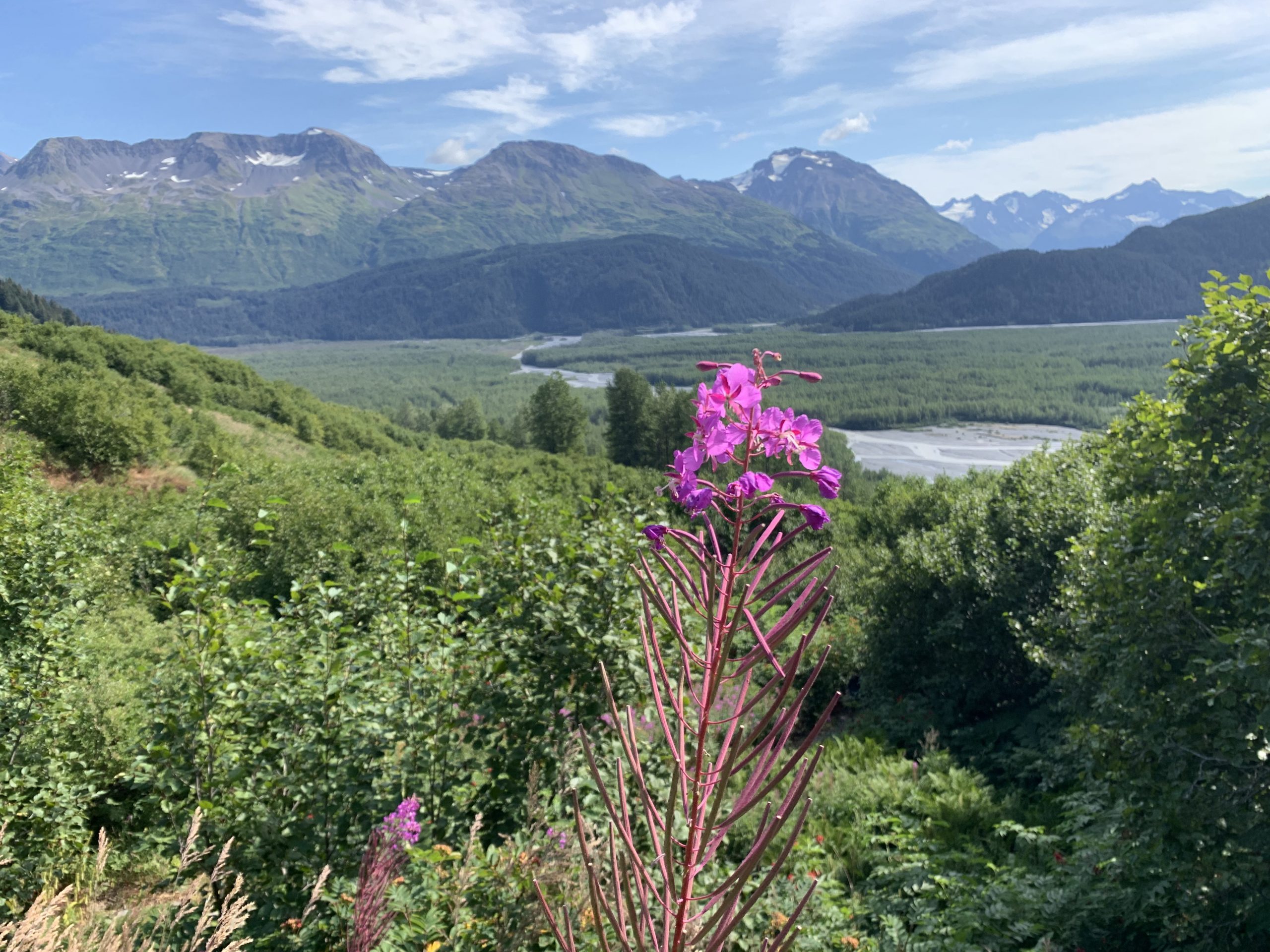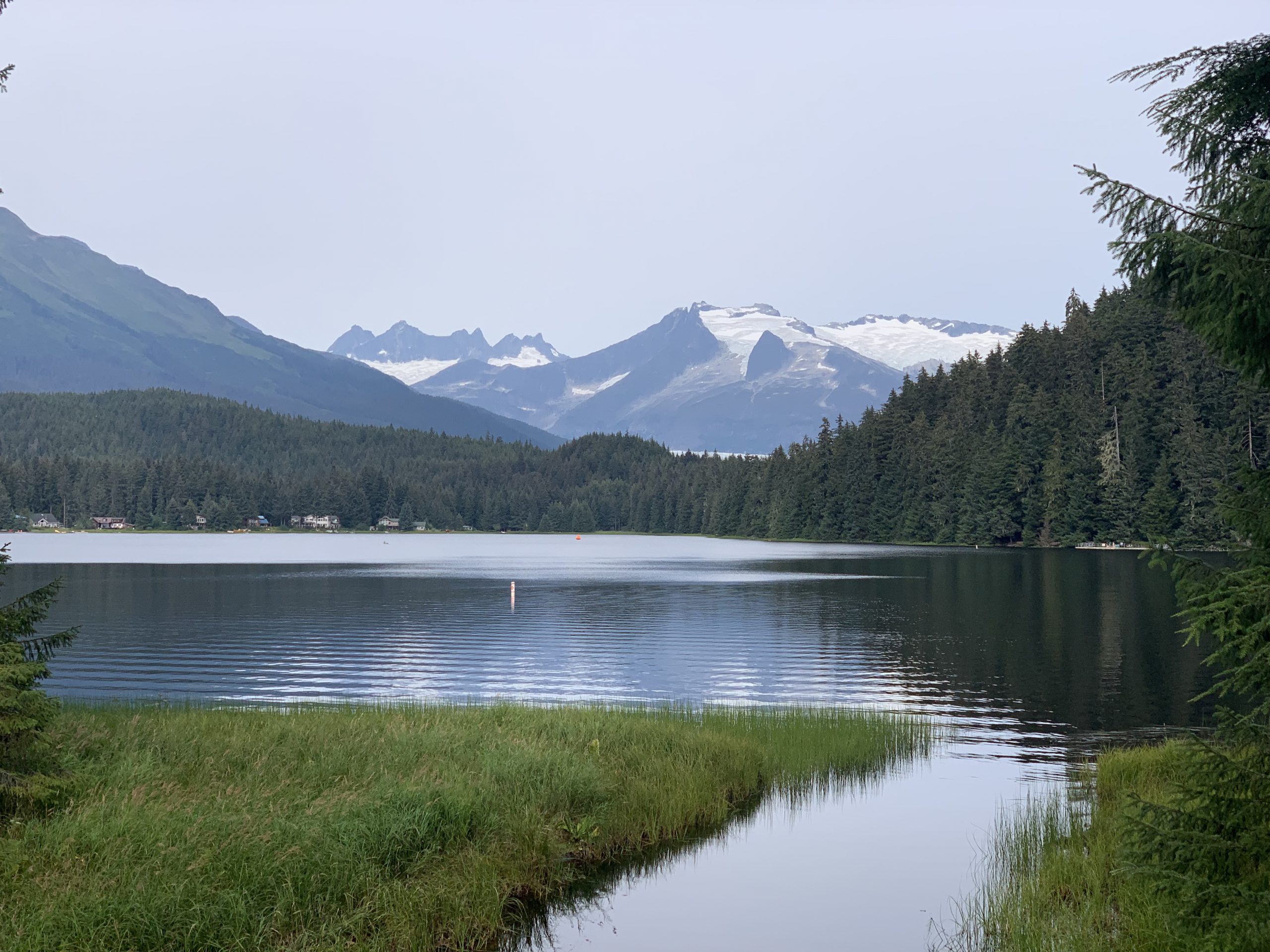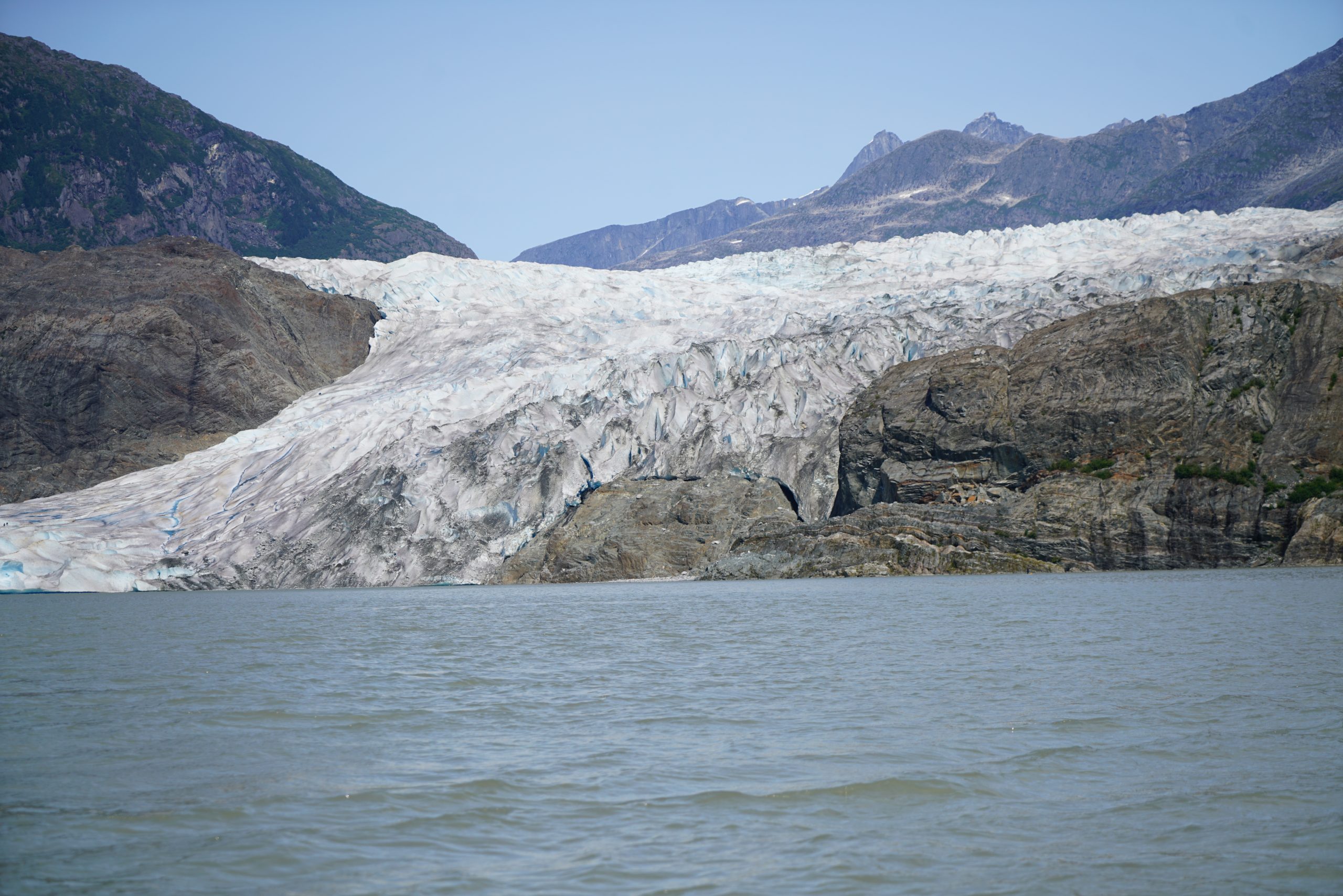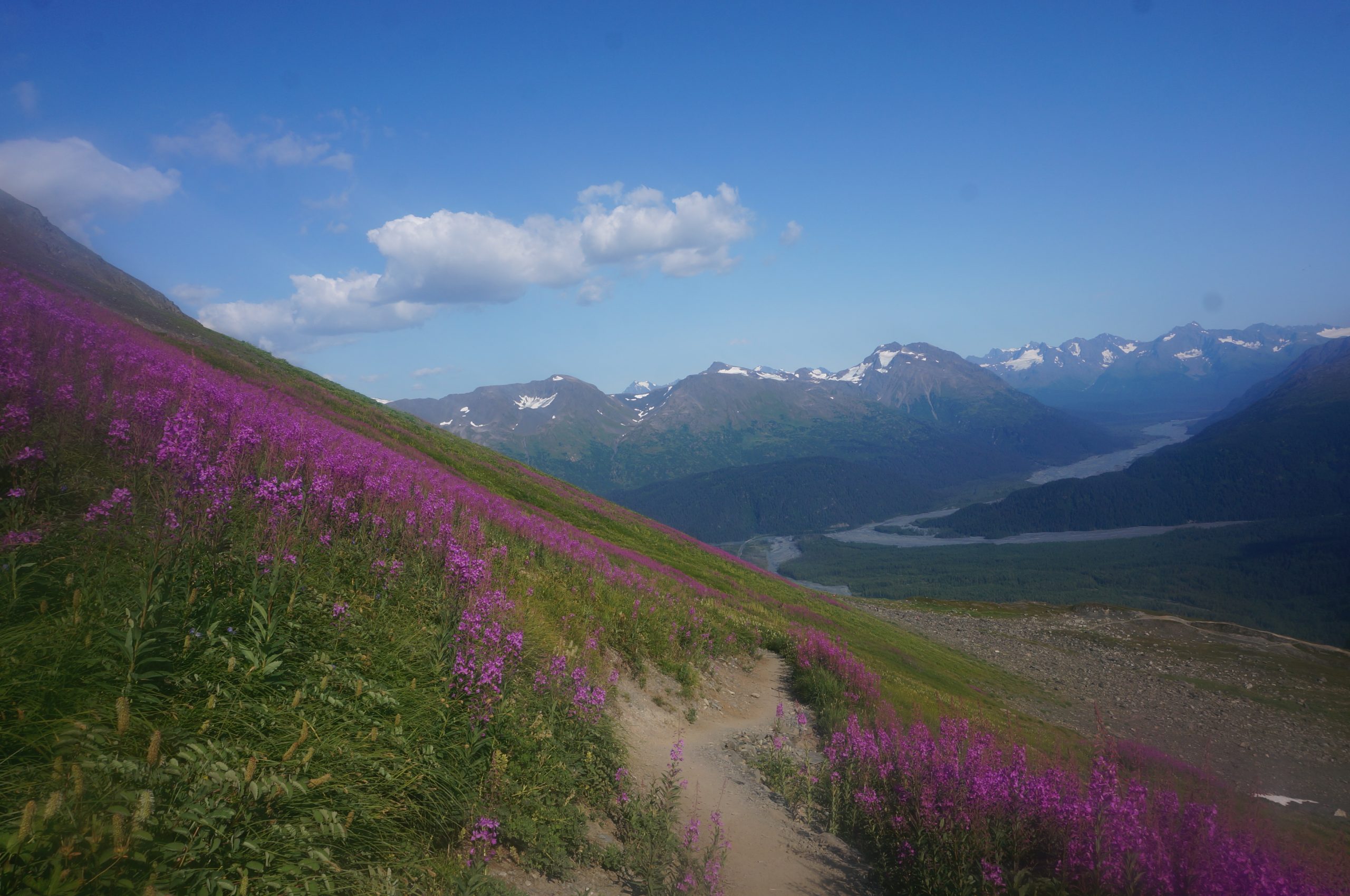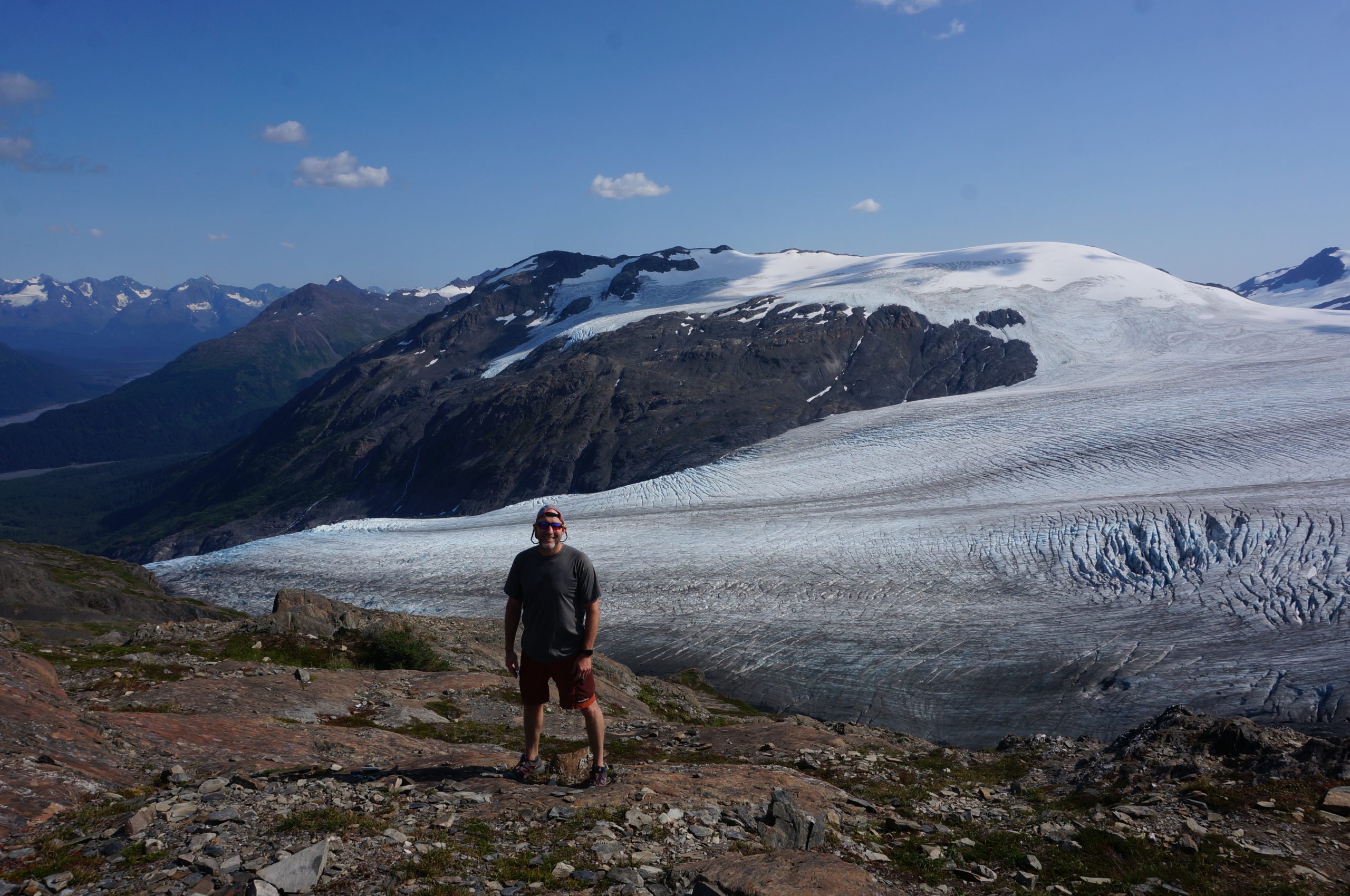What I Discovered in Alaska: Juneau and Seward
What I Discovered in Alaska
Encountering the struggles with climate change
Most Meaningful Experience: Hearing others speak about universal basic income
If you have 1 minute to fill out 3 questions, please take my survey here!
Part One: Juneau
They say that the United States is such a big and diverse place that visiting different states can feel like visiting completely different countries. I can’t say how true this is, but I can say that Alaska feels like another world. It feels remote, wild and rugged, and everywhere you turn you are met with vistas of mountains and glaciers.
I started my visit to Alaska in Juneau, the state’s capital, located on the Gastineau Channel. While it is relatively sparsely populated, with only about 30,000 people, the city and borough are enormous, covering more than 3,000 square miles, making it larger than Rhode Island.
Driving around and looking at the sea it seemed like stars dancing on the light blue water encompassed by light green blending to pine green dressed mountains
The center of the city itself feels like a fishing village that has just been overrun by tourists. Everywhere you look there are tour ships, shops and restaurants devoted to tourists, and just groups of people wandering the streets. But as soon as you leave the city center, you quickly find yourself in a natural wonderland.
Fishing, Seafood & Booze
The first thing I did was head out to the bay for some fishing. The drive is incredibly beautiful and scenic. No matter the time of day, the sun seems to bounce off the water, creating constellations of light. In the water, we were on the hunt for salmon and halibut. I have to say, while it might be delicious, halibut is an ugly, ugly fish!
After catching my fish, I also wanted to learn a bit about the fishing industry in the state, since it seems like everywhere you go there is Alaskan salmon on the menu. To that end, I headed to DIPAC, an education center and salmon hatchery that rears and releases salmon to repopulate the surrounding waters. The company releases 70 percent of its fish into the wild, and sells the remaining 30 percent through the Taku Store to help recover costs. So, if you are going to buy salmon in Alaska, this is a “feel good” way to do it.
I did eat a lot of seafood while I was in Juneau. I would have to say that my favourite place to each was Tracy King’s Crab Shack, which offers every type of crab cooked in every possible way, plus good tunes and good beer. I also really enjoyed The Devil’s Hideaway. This was more meat than seafood, but the big portions hit the spot at the atmosphere was ideal. There was also surprisingly good Indian food in Juneau at Saffron.
While in the city I also squeezed in a visit to the Amalga Distillery, which produces gin and single malt American whiskey, something I had to try being a fan of the Scottish stuff. The distillery has its own bar where it serves unique gin cocktails, and a very good ginger beer. Continuing my exploration of Alaskan booze, I also visited the Devil’s Club Brewery and The Alaskan Brewing Company for some local beers.
Hikes and Trails
As well as going out on the water, I spent a lot of time on my feet, as there is no shortage of amazing hiking trails close to the city. Among my favourites was the Salmon Creek Trail, which is an easy trail of around seven miles, though there is a bit of an incline at the end when you reach the Salmon Creek Reservoir that is the crowning glory of the trip.
A little bit further north, the Blackerby Ridge Trail, which is only about four miles, takes you up Cairn Peak. While this one is short, it is not for beginners. It is not well marked, it is steep, and there are no short cuts!
I also enjoyed the Mount McGinnis Trail, which was a difficult ten-mile hike, but the views from the summit more than paid off. It is also possible to poke around some glacier caves, and I have heard of bear citing on the trail, but unfortunately (or fortunately), I didn’t see any.
Mendenhall Glacier & Glacier Bay
Of course, one of the main reasons that many people visit Juneau is to see the famous Mendenhall Glacier, in Glacier Bay. This was definitely on my list, so I joined a kayaking tour around the glacier organized by Allen Marine Tours. It was actually a really tranquil experience, floating on the calm waters of the lake and watching the icebergs pass by. This part of the world is really just unique. It is one of the largest internationally protected Biosphere Reserves in the world, mixing ice-covered peaks, coastal beaches and deep fjords.
The one place that was on my list that I didn’t find the time to visit was Skagway. It is great hiking and kayaking, especially if you are looking for something a bit more adventurous. They have a funn quote there, “There is the right way, the wrong way and the Skagway.”
Part Two: Seward & Salaries
While Anchorage is the largest and most well-known city in the state of Alaska, where 40 percent of the state’s population live, it only got a drive by on our way to Denali. On the journey we also stopped to see some Musk Oxen, huge but seemingly gentle creatures that live in the Alaskan tundra eating moss and lichen to sustain themselves.
Denali
Unfortunately, our short time in Denali was plagued by rain and heavy cloud coverage, so it was not possible to do most of the outdoors activities that I had in mind such as rafting on the Upper Nenana or hiking up the Denali Peak.
What we did do one day, and was definitely the highlight of our time in Denali, was jump on some classic ATVs and explore the surrounding wilderness off-road. The mixture of scenery and adrenalin was amazing, as you can see in my film below. There were also a surprising number of good coffee shops spotted around the place to warm up and refresh throughout the day.
Seward
After Denali, we made our way to my favorite place in Alaska, Seward, located on Resurrection Bay in the Gulf of Alaska. This place has small-town charm. With less than 3,000 residents, only one tour ship is allowed to arrive each day during the week, keeping overt “touristification” at bay. A walk around the harbor does offer a view of the hundreds of local fishing and charter boats.
Again, this place is just surrounded by natural beauty, though it is at extreme risk. The local Exit Glacier is melting, and water is just pouring down from the heights and flooding the surrounded forested areas. This means that some of the surrounding areas are now out of bounds for tourists as the crumbling ice can be extremely dangerous. It is thought that the area will be unpassable within the next ten to twenty years.
Despite the understandable restrictions, there are still some great trails in the surrounding area. I did head out to the Exit Glacier in the Kenai Fjords National Park, and the views were amazing. It was an easy walk of only about two miles, but while it was beautiful, it was also sad to see up close how the glacier is receding.
I also did the obligatory four-mile Mount Marathon trail, though I walked it in my hiking boots rather than donning my running shoes as many do. I took on the ten-mile Harding Ice Field Trail, which was difficult, but worth it for the amazing scenery, and especially the spectacular waterfall.
In the town itself, I continued my love affair with Alaskan booze and popped into the Seward Brewing Company, which partners local brews with tasty food. I also enjoyed the Yukon Bar, a small music venue where you can catch local talent.
Universal Income
One of the interesting things that I learned while in Alaska is that it is one of the few places in the world that has a universal basic income. Presidential candidate Andrew Yang supports this for all Americans. The Alaska Permanent Fund is a state-owned investment fund that was set up in the 1980s using oil revenues, and pays out an annual dividend to every citizen of Alaska who has lived in the state for more than a year. It is generally between $1,000-$2,000 a year depending on the success of the fund’s investments.
Alaskans are very proud of this, and they talk about it a lot. It also seems to make a big difference in people’s lives. I met a retired Navy veteran called Ben who lives near Moose Pass. His wife has Alzheimer’s, and he said that it was hugely important for supporting her, and that the annual fluctuations can make a big difference to their quality of life.
Alaska is also the only state in the United States that does not charge sales tax or levy an income tax, relying on oil revenues for 85 percent of the state’s income. However, in recent years, as oil prices have dropped, the state’s budget has become very tight. The state has been considering boosting its coffers by reducing the universal basic income. Ben explained to me that while this may seem logical, it also represents a universal tax on every person, regardless of age an income level. A salary-based tax would allow the state to place a higher burden on the wealthy and spare the poor, but the idea of introducing new taxes is extremely unpopular.
Ben told me that this is Alaska’s current key political issue, and it was one that I was aware of but I wanted to see in person. Just one more way that Alaska feels like somewhere completely different to the rest of the United States.



